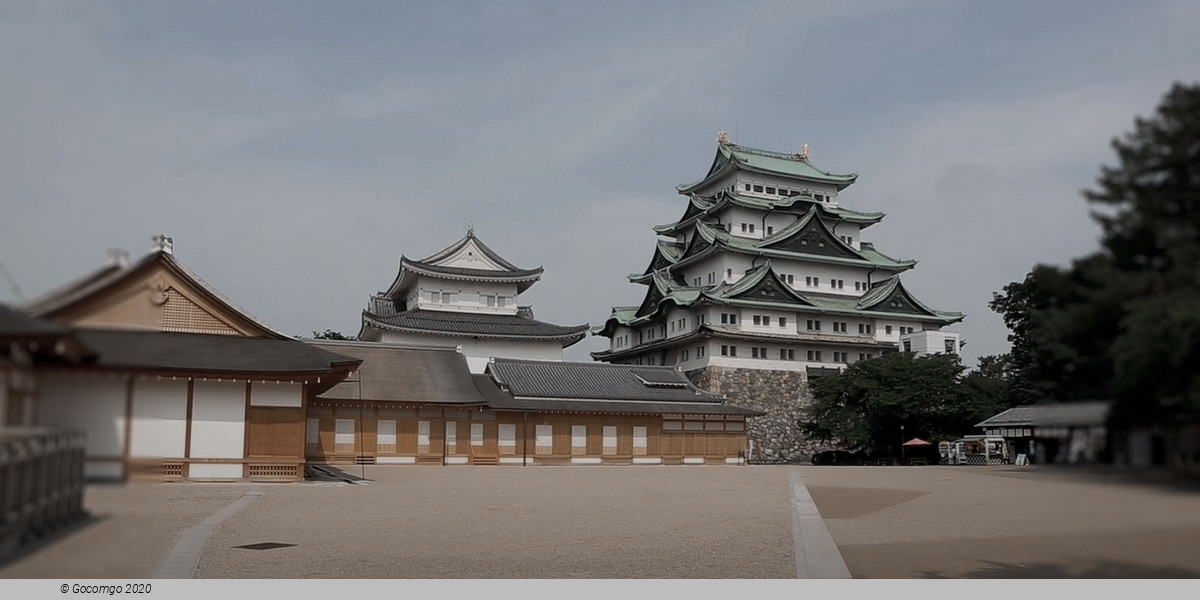Nagoya

Nagoya is the largest city in the Chūbu region of Japan. It is Japan's fourth-largest incorporated city and the third most populous urban area. Located on the Pacific coast on central Honshu, it is the capital of Aichi Prefecture and is one of Japan's major ports along with those of Tokyo, Osaka, Kobe, Yokohama, and Chiba. It is also the center of Japan's third-largest metropolitan region, known as the Chūkyō metropolitan area. As of 1 October 2019, 2,327,557 people lived in the city, part of Chūkyō Metropolitan Area's 10.11 million people, making it one of the 50 largest urban areas in the world.
Nagoya was a major trading city and political seat of the Owari lords, the most important house of the Tokugawa clan. They encouraged trade and the arts under their patronage, especially Tokugawa Muneharu, the 7th lord, who took a keen interest in drama and plays and lived lavishly. Under his rule, actors and actresses began to visit Nagoya. Arts and culture was further supported by the city's wealthy merchants. Culture flourished after the feudal Edo period and the beginning of the Meiji era. During World War II many old buildings and artefacts were destroyed. The region's economic and financial power in the post-war years rekindled the artistic and cultural scene.
Museums
Nagoya has multiple museums, including traditional and modern art, handicrafts to industrial high-tech, natural and scientific museums.
Nagoya Castle's collection is from the Owari Tokugawa era. The main tower is a museum that details the history of the castle and the city. The Honmaru Palace, destroyed in World War II, was reconstructed in 2018; it is a prime example of the Shoin-zukuri architecture of the feudal era. Tokugawa Art Museum is a private museum belonging to the Owari Tokugawa, who lived in Nagoya castle for 16 generations. Among other things, it contains 10 designated national Treasures of Japan, including some of the oldest scrolls of The Tale of Genji. The Nagoya Noh Theatre houses various precious objects of Noh theatre. The Nagoya City Museum showcases the history of the town.
Yōki-sō is a villa and gardens located in Chikusa-ku, close to Nittai-ji. It was constructed in the Taishō era for Ito Jirozaemon Suketami XV, the first president of Matsuzakaya.
Paintings and sculpture are exhibited at the Nagoya City Art Museum. Modern art is displayed at the Aichi Arts Center. The Aichi Arts Center also is the venue of rotating exhibitions. The city is also home to the Nagoya/Boston Museum of Fine Arts, a sister museum to the Museum of Fine Arts, Boston, which was founded to bring aspects of the MFA's collection to Japan.
The art of porcelain and ceramics can be seen at the Noritake Garden. Toyota has two museums in the city, the Toyota Automobile Museum which shows vintage cars, and the Toyota Commemorative Museum of Industry and Technology, which showcases company history, including its start as a textile mill.
The Nagoya City Tram & Subway Museum has trams and subway cars, as well as the Nagoya City Science Museum. The SCMaglev and Railway Park opened in March 2011 with various trains from the Central Japan Railway Company.
Other art museums in Aichi prefecture are the Aichi Prefectural Ceramic Museum and the Toyota Municipal Museum of Art. Meiji Mura is an open-air museum with salvaged buildings from the Meiji, Taishō and Showa eras. Another museum in Nagoya is the Mandolin Melodies Museum.
Other museums in the city include the International Design Centre Nagoya, the Japan Spinning Top Museum and the Bank of Tokyo-Mitsubishi UFJ Money Museum.
The civic authorities promote tourism and have taken steps to safeguard architectural heritage by earmarking them as cultural assets. Apart from the castle, temples, shrines and museums in the city, a "Cultural Path" was instituted in the 1980s, located between the Tokugawa Art Museum and Nagoya Castle. This residential area has historic buildings such as the Nagoya City Archives, the Nagoya City Hall main building, the Aichi Prefectural Office main building, the Futaba Museum, the former residence of Sasuke Toyoda, the former residence of Tetsujiro Haruta and the Chikaramachi Catholic Church. Most buildings date from the Meiji and Taishō era and are protected.
Theatres
Nō and Kyōgen theatre date back to the feudal times of the Owari Tokugawa lords. The Nagoya Noh Theater at Nagoya Castle continues that tradition and is a prominent feature in the cultural life of the city, with monthly performances.
Developed during the Edo period, one of Japan's kabuki grand stages is Misono-za, which also hosts various other Japanese entertainment such as concerts.
In 1912, the musician Gorō Morita invented the Nagoya harp music instrument.
In 1992, the large, modern Aichi Arts Center was opened in Sakae. It is the main venue for performing arts, featuring a main hall that can be used for opera and theatre and a concert hall. The Nagoya Philharmonic Orchestra performs there, as well as many visiting guest orchestras.
Ikebana
Ishida-ryū is a school of Ikebana, or Japanese floral art. It was founded in 1922 and is headquartered in Nagoya.
Festivals
Apart from the main national festivals and holidays, other festivals in Nagoya are unique to the city/region.
Major events include the June Atsuta Festival, the July Port Festival, the August Nagoya Castle Summer Festival Castle and the October Nagoya Festival. Wards and areas host local festivals such as the Daidō-chōnin Matsuri in Ōsu.

